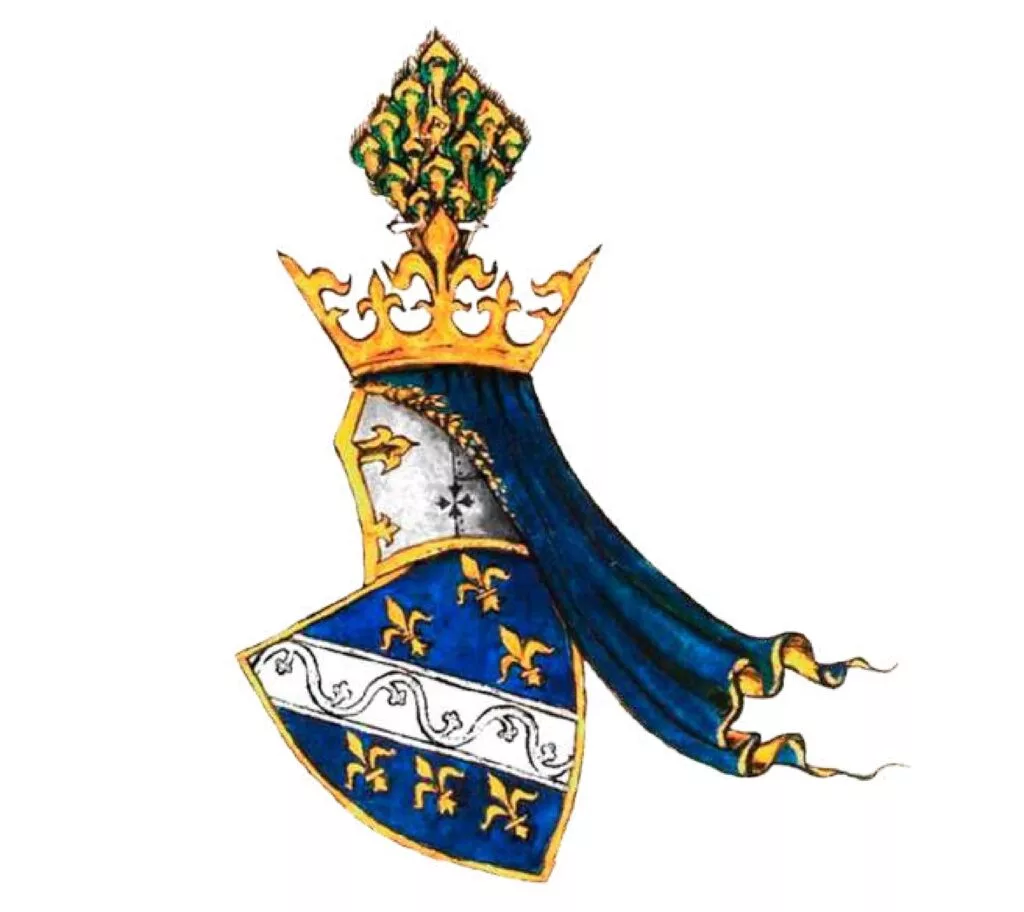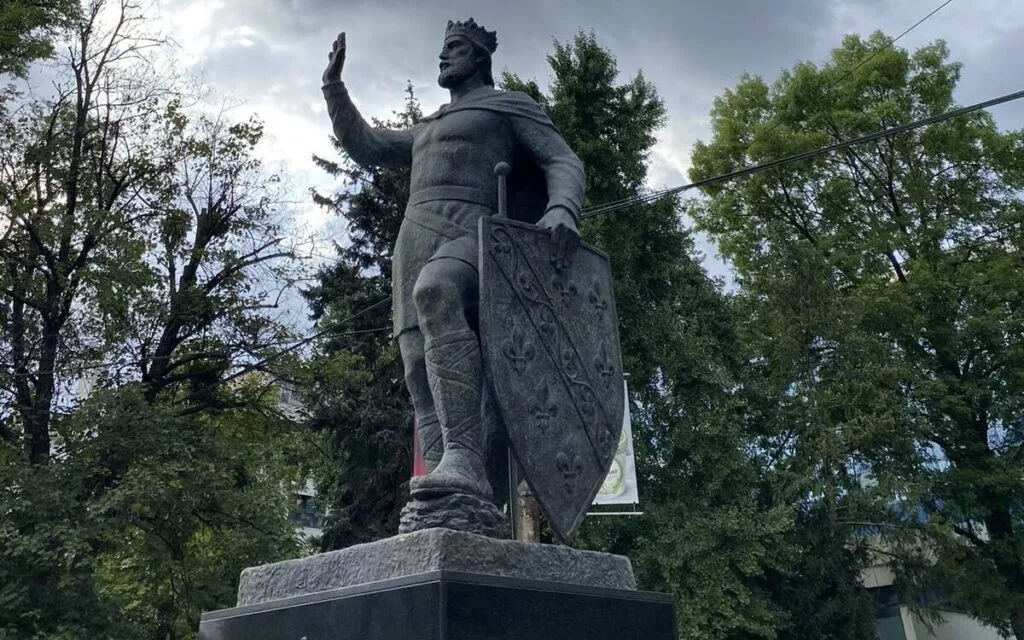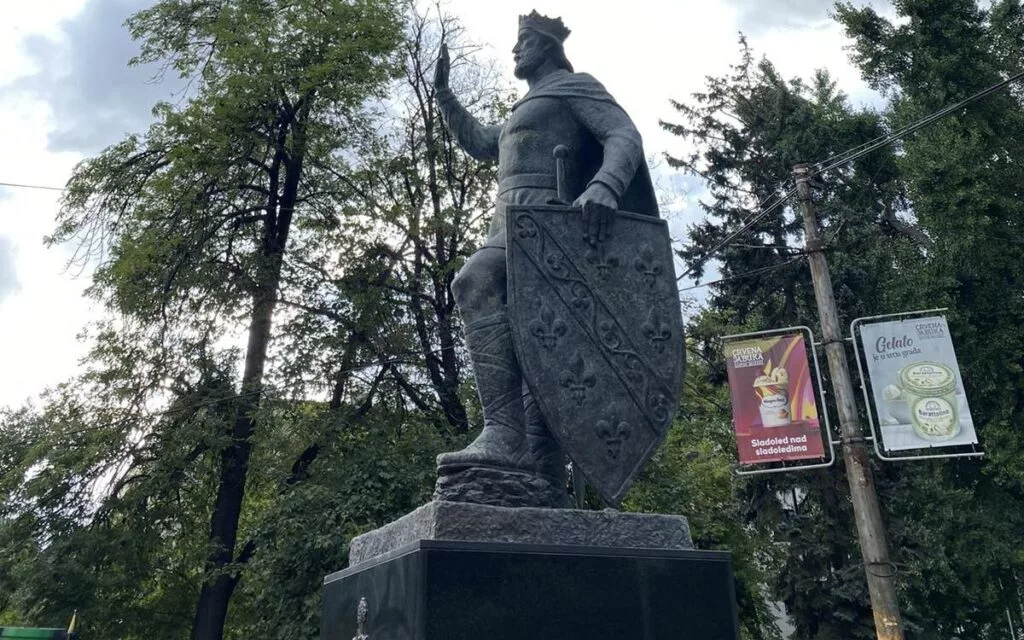Tvrtko I Kotromanić was a significant figure in the history of Bosnia. As a ruler, he left a lasting impact on the region, shaping its political landscape and cultural identity. Explore the life and reign of Tvrtko I, and delve into the rich history of Bosnia under his rule.

The Kings of Bosnia, who governed over present-day Bosnia-Herzegovina and Dalmatia from 1377 to 1463, had a coat of arms composed of a blue shield with six Golden Lilies surrounding a white bend, all enclosed by a gold border. The Golden Lily, which is a native lily to the area, represents Lilium bosniacum. The crest features a plume of peacock feathers within a coronet of lilies. After the Ottomans took over the region in 1463, the use of the royal coat of arms in Bosnia was discontinued. The republic adopted the heraldic display of the kings as the basis for its arms in 1992. There are ancient artifacts that suggest the Lilium bosniacum has symbolized Bosnia since the 7th century.
With the recent unveiling of a statue dedicated to the most significant Bosnian ruler, King Tvrtko I Kotromanić, in Sarajevo, the spotlight has once again turned to this medieval monarch of the Bosnian Kingdom. The statue of this historical figure now stands as a powerful symbol, rekindling interest and pride in Bosnia’s rich heritage.
You can see the statue of this medieval ruler of the Bosnian Kingdom across from the Presidency building, and you can read a brief description of who this great ruler was in the following text.

Early Life and ascension to the Throne
Tvrtko I Kotromanić was the last Bosnian ban and the first Bosnian king. He was the son of Prince Vladislav, the brother of the previous ban in Bosnia, Stjepan II, and Jelena Šubić, the daughter of Juraj II Šubić from the Croatian ruling family Šubić. He was born around 1338 At that time, Bosnia was under the influence of various regional powers such as Hungary and Serbia, and the nobility within the country often fought for power.
After his father’s death in 1353, Tvrtko became the Ban of Bosnia, and in 1377, following numerous political intrigues, he was crowned as the first King of the Kingdom of Bosnia. Tvrtko I was determined to defend and expand his country’s territory. During his reign, the Kingdom of Bosnia experienced a period of prosperity.
One of Tvrtko I Kotromanić’s most significant achievements was his coronation in 1377 when he became king and was crowned as the “King of Bosnia, Serbia, Primorje, and Zahumlje.” This act not only marked his authority over Bosnia but also his territorial claims to neighboring regions.

Rule and Legacy
As a ruler, Tvrtko I was a capable diplomat and military strategist. During his reign, he expanded his kingdom’s territory and established friendly relations with neighboring rulers. The Kingdom of Bosnia under Tvrtko I reached its zenith in terms of power and territorial influence.
However, after Tvrtko’s death in 1391, the kingdom fell into internal conflicts and challenges. Shortly after his death, the Ottomans began attacking and conquering territories in the Balkans, including parts of Bosnia. Tvrtko I is remembered as the king who temporarily united Bosnia and Herzegovina and left a
deep imprint on the region’s history.
King Tvrtko I Kotromanić’s legacy stretches far beyond the borders of his kingdom. His reign, which began in the 14th century, is remembered as a period of political consolidation, territorial expansion, and cultural renaissance. Under his leadership, the Kingdom of Bosnia reached its zenith, establishing itself as a formidable regional power.
Today, Tvrtko I remains a key figure in Bosnian history, and his reign and legacy continue to intrigue researchers and history enthusiasts worldwide.
If you want to know more about the medieval Bosnian kingdom and king Tvrtko book some of our tours.
Visit our social media profiles as well:
